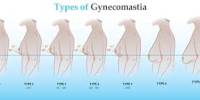The superior colliculus is a multisensory integration and movement control area located deep within the vertebrate brain. This brain region in rodents combines multisensory inputs such as visual cues, sounds, touch information, and odors, then sends output signals to a variety of motor control centers in the brain, coordinating the animal’s actions in response to its surroundings.
Although the superior colliculus only accounts for a small percentage of the brain volume in mice, it is a processing powerhouse thanks to its precise cellular layers that organize and refine signaling patterns.
Now, a team of researchers led by Michael Fox, professor at VTC’s Fralin Biomedical Research Institute, has discovered a critical link in how the layers of this processing hub evolve to decipher visual inputs from the eye and govern essential survival instincts in mice. The results of the research were reported in the Proceedings of the National Academy of Sciences.
“This brain region is interesting because it integrates data from multiple sensory inputs, helps form a binocular image of the world, and then dictates the animal’s innate behaviors such as running away from a predator or hunting prey based on those data,” said Fox, who is also the director of the Virginia Tech College of Science’s School of Neuroscience.
Weeks before a mouse opens its eyes for the first time, neurons form the optic nerve by extending long axonal processes from the rear of the eye. Thousands of complicated connections are formed by these developing cells in specific brain regions, including the superior colliculus.
According to Fox, the mechanism by which these cells determine where to move is mainly unknown. Understanding this critical stage of development, on the other hand, could reveal fresh knowledge that could aid future studies in identifying strategies to restore injured optic nerve fibers.
“If our goal is to one day regenerate damaged brain circuits to restore vision, then first we need to know how to get the cell’s axons to grow into a precise destination in the brain,” Fox said.
This brain region is interesting because it integrates data from multiple sensory inputs, helps form a binocular image of the world, and then dictates the animal’s innate behaviors such as running away from a predator or hunting prey based on those data.
Michael Fox
Fox and his colleagues investigated how ipsilateral retinal ganglion cells, a type of optic nerve cell, makes their way to the superior colliculus during brain development.
The researchers utilized a virus to figure out which neurons the retinal ganglion cells connected to once inside the superior colliculus. As a result, they were able to identify two proteins that help with circuit development.
One protein, released by a type of excitatory neuron in the superior colliculus, acts as a molecular homing beacon, luring the optic nerve cell closer. This protein docks with a flawlessly fitting receptor protein on the nerve cell’s membrane after the migrating cell is in the appropriate position. This chemical reaction informs the cell that it has arrived at its final destination.
When the beacon molecule nephronectin is missing, the superior colliculus’ visual layer fails to form properly, and mice have difficulty hunting prey.
For more than 60 years, the superior colliculus of mice has been widely investigated. Although this brain region is found in all mammalian species, it is smaller in humans and is assumed to play a role in stabilizing our view of a moving world by controlling head, neck, and eye motions.
According to Fox, this study is the result of an early research partnership between experts at Children’s National Hospital and the Fralin Biomedical Research Institute. He recalls how Fox and Jason Triplett, a principal investigator at Children’s National Hospital in Washington, D.C., were introduced seven years ago by Virginia Tech’s Vice President for Health Sciences and Technology Michael Friedlander.
“We talked about studying how these neurons project to the colliculus back in 2013, and we’ve since worked on numerous grant-funded projects together,” Fox said. “This paper was born from those early discussions.”
Jimmy Su, a research assistant professor, and Ubadah Sabbagh, a former graduate research assistant at the time of the study and currently a postdoctoral researcher at MIT, were co-first authors in Fox’s group at the Fralin Biomedical Research Institute.
Other research contributors include Yuchin Albert Pan, an associate professor at the Fralin Biomedical Research Institute; Yanping Liang, a research assistant at the Fralin Biomedical Research Institute; Lucie Olejnikova, a former postdoctoral researcher at the Fralin Biomedical Research Institute; Karen Dixon, a research technician in Triplett’s lab; Ashley Russell, a former postdoctoral research fellow at Children’s National Hospital; and Jiang Chen, a former postdoctoral research at the Fralin Biomedical Research Institute.
This research was supported in part by the National Eye Institute.















